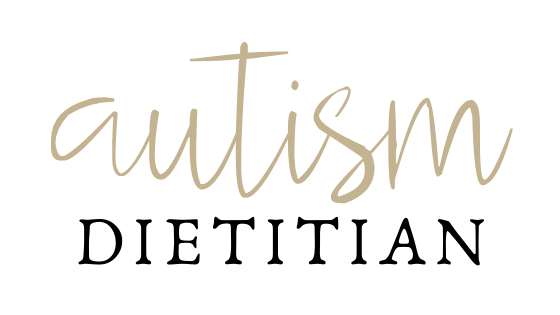The Best Non-Dairy Milks {+ How to Make It Yourself!}
A dairy-free diet is a necessity for many people, including many individuals on the autism spectrum. Most often, the removal of dairy from the diet is due to an allergy, sensitivity, or lactose intolerance. Some people prefer to remove dairy from the diet for other motivations, such as environmental or ethical reasons. If you have made the switch, or are in the process of making the switch, you might be conflicted after reading the ingredients on the label of a popular dairy alternative.
Non-dairy milks often contain ingredients such as gums (like Gellan Gum or Locust Bean Gum), lecithins (typically sunflower or soy), carrageenan, and other natural flavors. Gums, lecithins, and carrageenans are used to emulsify, thicken, and/or preserve foods and drinks. Since most non-dairy milks are made from nuts (which are primarily fats), they don’t mix with water well. This warrants adding in additional ingredients to give it the mouthfeel and look of typical milk. Some research suggests that these ingredients can cause inflammation, digestive problems, or other underlying issues. Because of this, I generally recommend my clients choose milk alternatives that contain as few ingredients as possible, with the gold standard being just nuts and water.
There are a few brands that do have dairy alternatives with just a few ingredients and no added binders or fillers. Some of my favorites include: MALK, Trader Joe’s “Simply Almond Beverage”, Three Trees, Beber, and Elmhurst, though I’m sure there are others. You also have another option: making it yourself.
Making your own nut milk is actually a lot easier than you think! You only need a few ingredients!
Ingredients
1 cup of nuts (almonds, cashews, walnuts, etc)
3-4 cups of filtered water (reverse osmosis is ideal)
1 pinch of sea salt
Your preferred sweetener (pitted Medjool dates, agave syrup, maple syrup, stevia, etc)
Materials:
A high-powered blender (we love our Vitamix!)
A nut-milk bag (you could also use cheesecloth if you have one on hand)
A glass jar with lid or bottle, for storage
Directions
Soak the nuts overnight in filtered water, enough to cover. Choose a container with a lid, preferably glasses.
In the morning, strain the nuts and rinse them. If you are using almonds, you can choose to remove the skins. This makes them easier to digest! This is not necessary, but if you have a sensitive stomach, I’d recommend taking the extra time and precaution.
Place your nuts along with 3-4 cups of filtered water and a pinch of salt into a high power blender and blend on high for 3-5 minutes until thick and frothy. Note: if you’re wanting to use pitted dates to sweeten your milk, you’ll want to blend them in now. Other sweeteners should wait until step 6.
Put your nut milk bag over a bowl or large jar and pour the contents from the blender through the bag.
Once you’ve emptied the blender, you can use your hands to help strain the remaining liquid from the nut milk bag into your container.
If you want to flavor your milk with a little splash of vanilla or some sweetener, now is the time! You can add them to your milk, put on the lid, and shake, shake, shake!
Store your milk in the refrigerator for up to 5 days. Enjoy in smoothies, in cereal or granola, or by itself! You’ll be able to taste the difference from your store-bought milk immediately.
…and that’s it! Enjoy your fresh, thick, and flavorful nut milk without any added binders or fillers. If you’re interested in completely going dairy-free, you can check out my blog: Dairy-Free Diet for Autism. You may also want to save time and use a nut-milk appliance, like this one from Amazon or an Almond Cow.
Looking for Nutrition Guidance & Community?
*Autism Dietitian is a participant in the Amazon Services LLC Associates Program, an affiliate advertising program so that when you click through our Amazon links, a percentage of the proceeds from your purchases will go to Autism Dietitian LLC. Program participation does not influence product recommendations.
The Content is not intended to be a substitute for professional medical advice, diagnosis, or treatment. Always seek the advice of your physician or other qualified health provider with any questions you may have regarding a medical condition. Never disregard professional medical advice or delay in seeking it because of something you have read on this Website.

